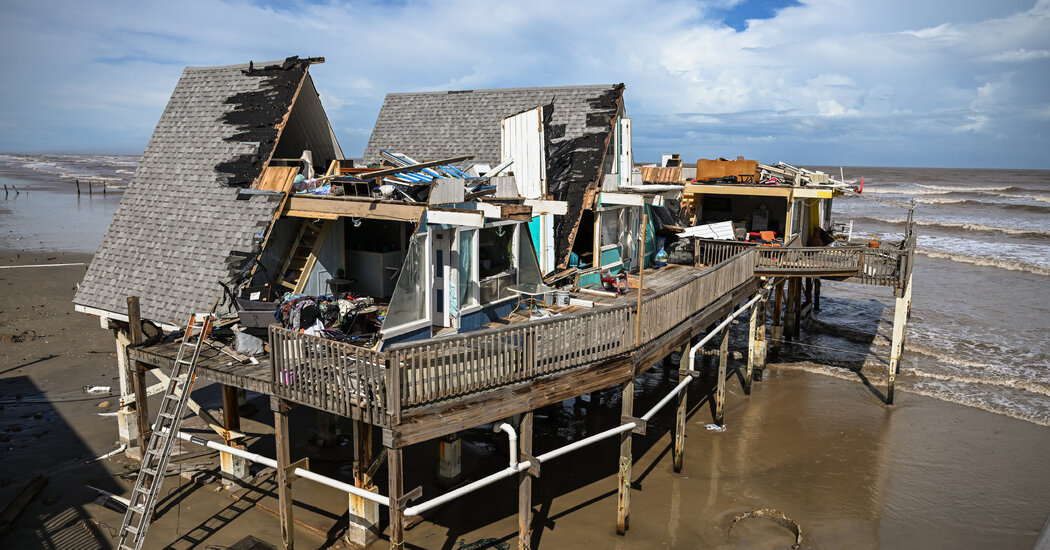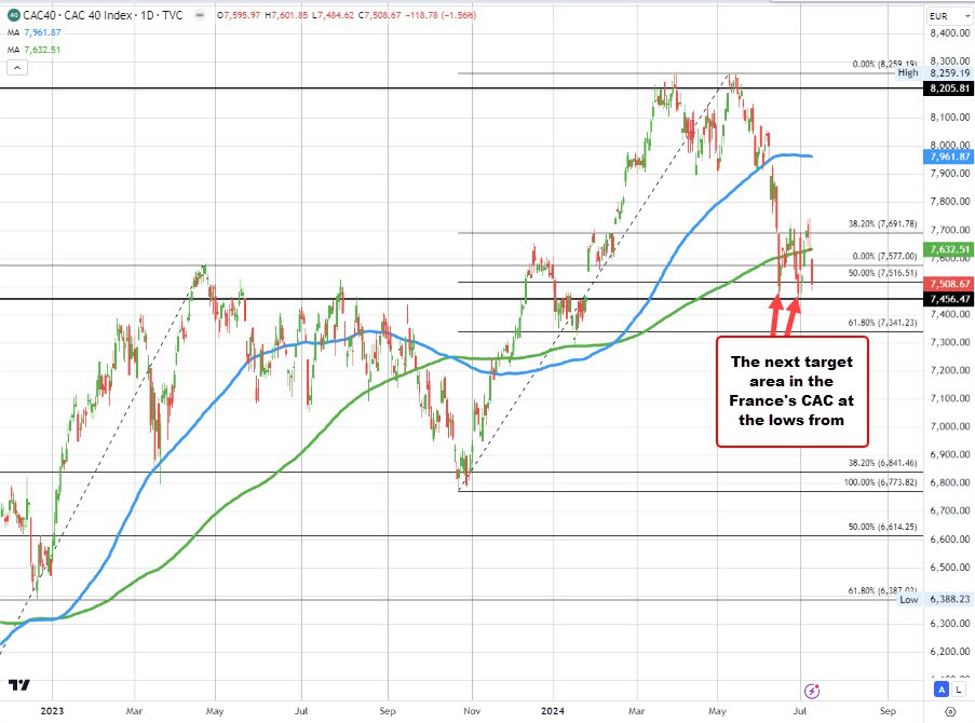A day after Tropical Storm Beryl struck Houston with deadly force, flooding roads and highways and killing at least four people in Texas and a fifth in Louisiana, officials were struggling to restore power for millions of residents as hot weather returned to the region.
The storm, which made landfall in Texas as a Category 1 hurricane around 4 a.m. on Monday, weakened as it passed through the sprawling city and its suburbs. But the force of its winds still left Houston residents reeling for the second time in two months after a deadly system of thunderstorms crashed through the city in May.
The storm knocked down a lot of trees, including three that killed people.
The storm had sustained winds of 65 m.p.h. as it passed through Houston but also produced damaging, hurricane-force wind gusts above 80 m.p.h. in and around the city. That was enough to rip branches and topple trees across the city.
Two of the confirmed deaths from the storm in the Houston area on Monday involved trees that fell into homes, crushing people inside.
In the Atascocita area northeast of the city, a tree killed a man who was inside his house with his family. He was 53 years old, the Harris County sheriff said on social media. Another person was taken to the hospital with non-life-threatening injuries, according to the local fire department.
A falling tree also killed a 74-year-old woman who had been in her home to the north of downtown Houston, near Interstate 45, the authorities said.
In Bossier Parish in northwestern Louisiana, a 31-year-old woman was killed when a tree fell on her home Monday as Beryl brought high winds and tornadoes to the area, officials said.
The storm moved quickly, without stalling out like Hurricane Harvey.
Beryl brought heavy rains to Houston. Floodwaters filled many of the city’s drainage bayous to the top of their banks and, in some cases, overtopped them. Elsewhere, sections of highways and underpasses filled with water. Officials said at least 47 people had to be rescued from high water.
A civilian employee of the Houston Police Department died when he drove into a flooded underpass near downtown where his car became submerged. (A fourth person died in a house fire in southeast Houston that Mayor John Whitmire of Houston said was “storm-related.”)
But the city was spared widespread flooding in neighborhoods. Unlike Hurricane Harvey, the 2017 storm that devastated the city, Beryl moved relatively quickly through Houston, arriving in the early hours of the morning and departing the city by the afternoon.
While the water was high in many places, some of it was already beginning to recede on Monday and that was expected to continue on Tuesday.
Millions were without power, with no word on when they would get it back.
Once the storm moved on, the biggest issue for Houston residents became the widespread lack of power. The main provider, CenterPoint Energy, said on Monday that more than two million customers were without electricity and officials did not immediately provide a timeline for when people could expect to get power back.
About one in five electricity customers in Texas had lost power by midday on Monday, with most of the outages in the Houston area.
“The vast majority of us are without power,” Lina Hidalgo, the Harris County judge and the county’s top elected official, said at a Monday afternoon news conference. She said that around 10,000 electrical workers were ready to begin repairs as soon as they could safely do so, including 7,000 workers who had come to assist from outside of the Houston area.
CenterPoint said in a statement that customers in the hardest-hit areas should prepare for an extended period without electricity.
“This will be a multiday restoration effort,” said Thomas Gleeson, the chairman of the state’s Public Utility Commission.
The damage in the United States paled next to what happened in the Caribbean.
The force of the storm was considerably diminished from its peak in the Caribbean. Beryl formed in June and grew into a Category 5 hurricane, the earliest such hurricane ever recorded in the Atlantic Ocean.
The storm killed at least 11 people across several islands of the Caribbean, including Jamaica, and in Venezuela.
In Carriacou and Petite Martinique, Grenada, Beryl destroyed roughly 98 percent of the buildings, which are home to around 10,000 people, officials said, when it struck as a Category 4 hurricane on July 1.
The storm is weakening, but tornadoes remain possible.
Beryl was moving out of Texas on a path that was forecast to continue into Louisiana and Arkansas, and then further north.
As the storm has moved inland, it has continued to weaken. But tornadoes remained a possibility. Forecasters issued tornado warnings for parts of East Texas and Louisiana on Monday.
Dan Patrick, the lieutenant governor of Texas, said in a news conference that there had been “a number of tornadoes” reported in northeast Texas on Monday.
Judson Jones contributed reporting.















